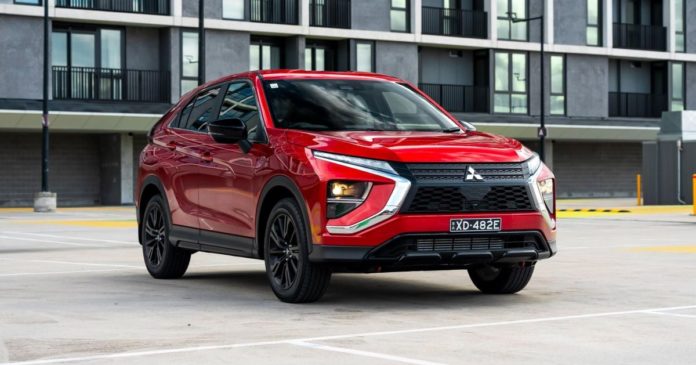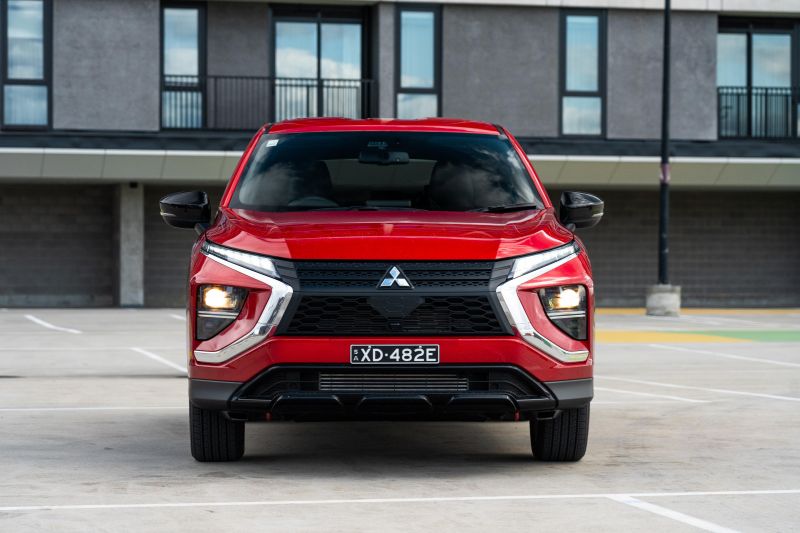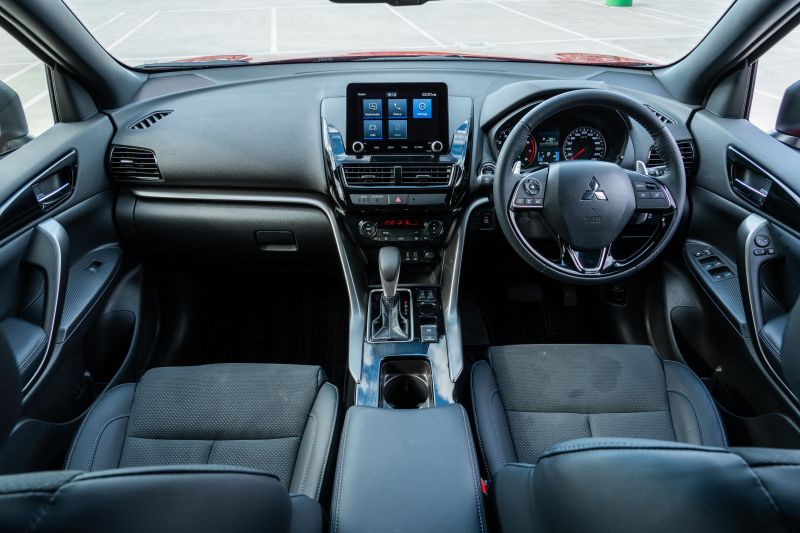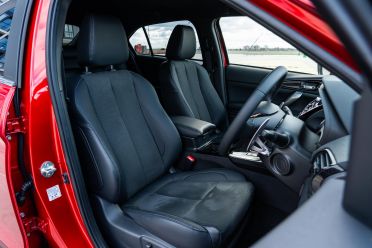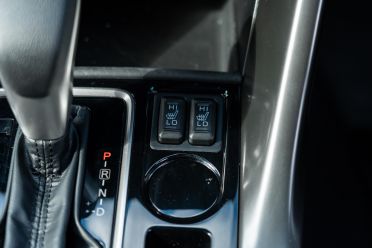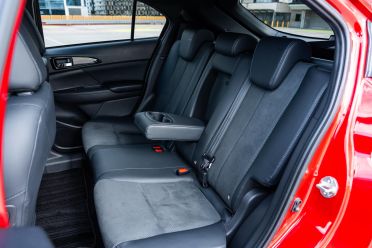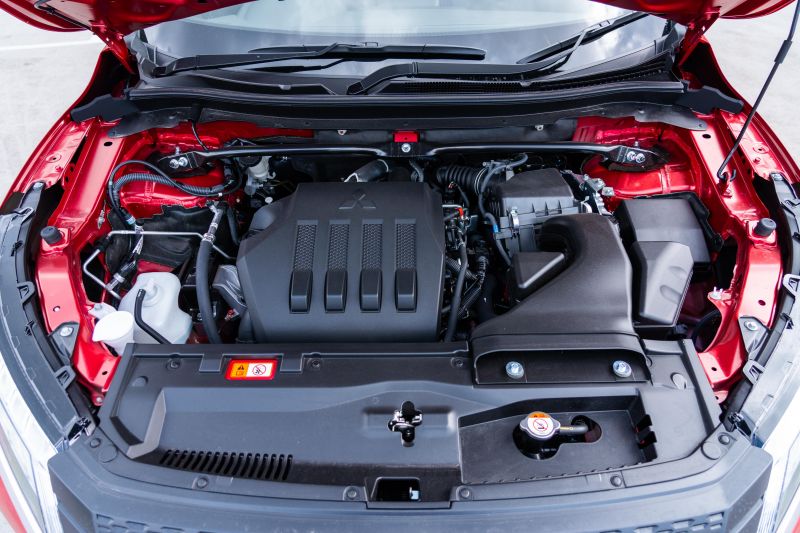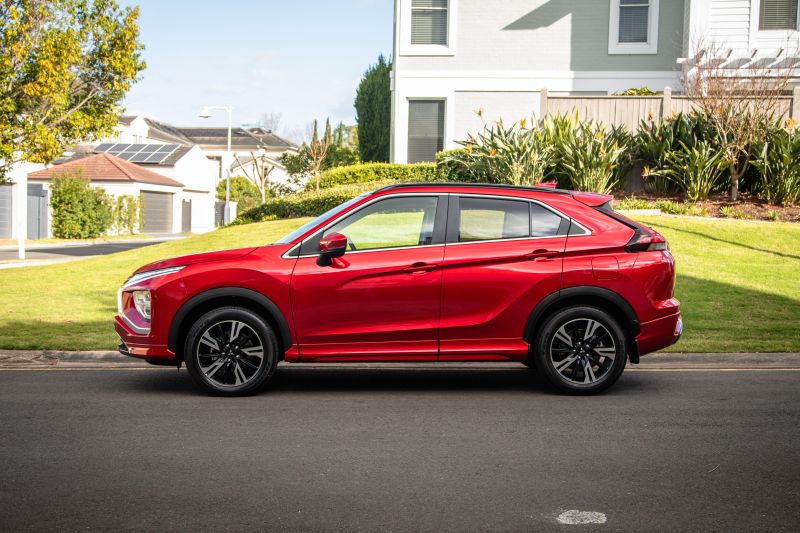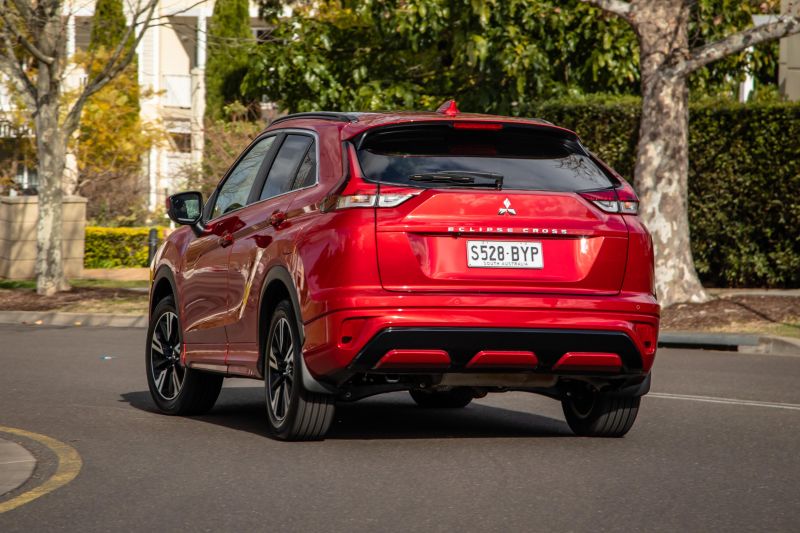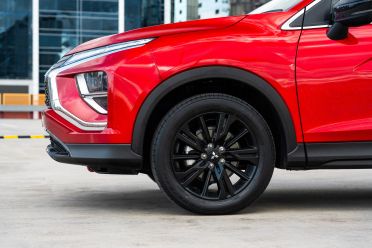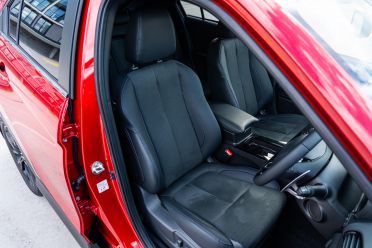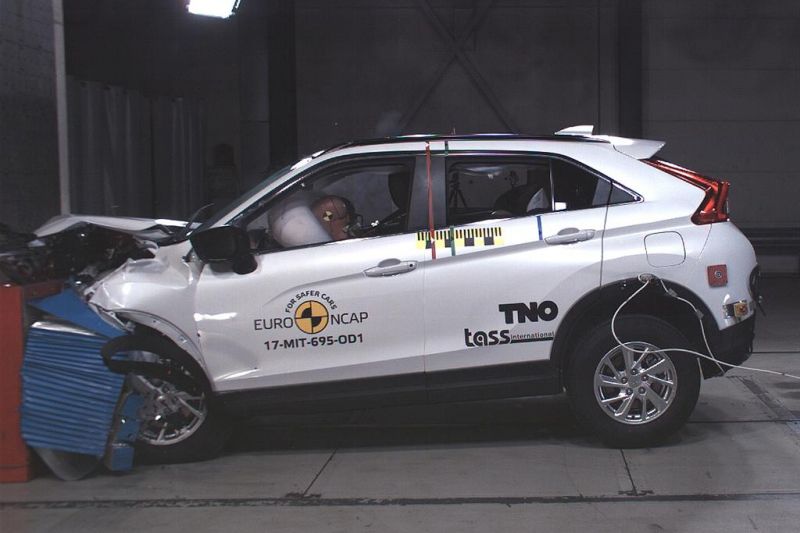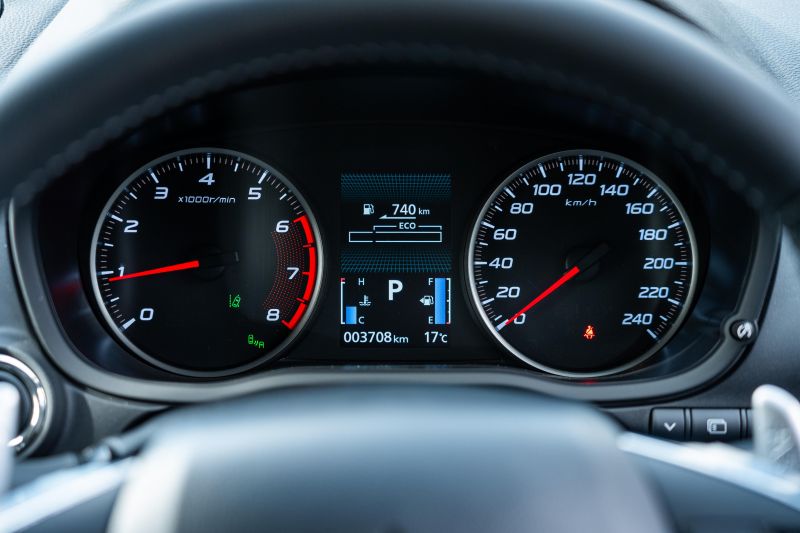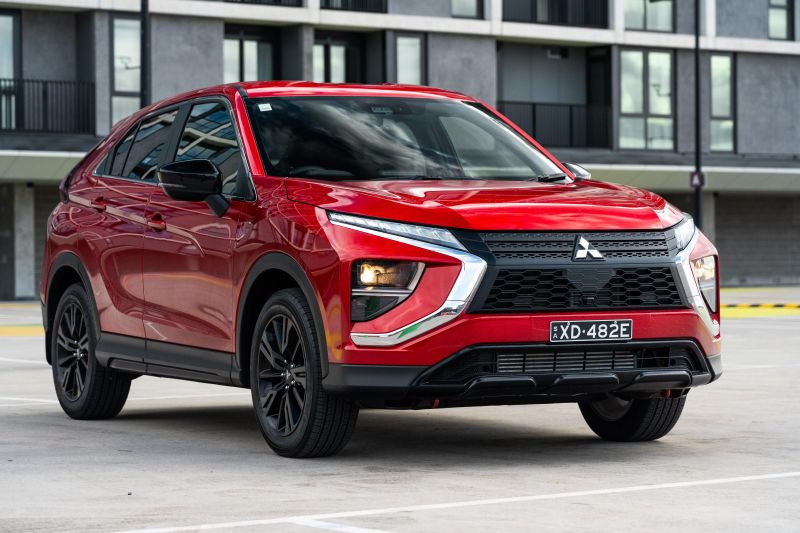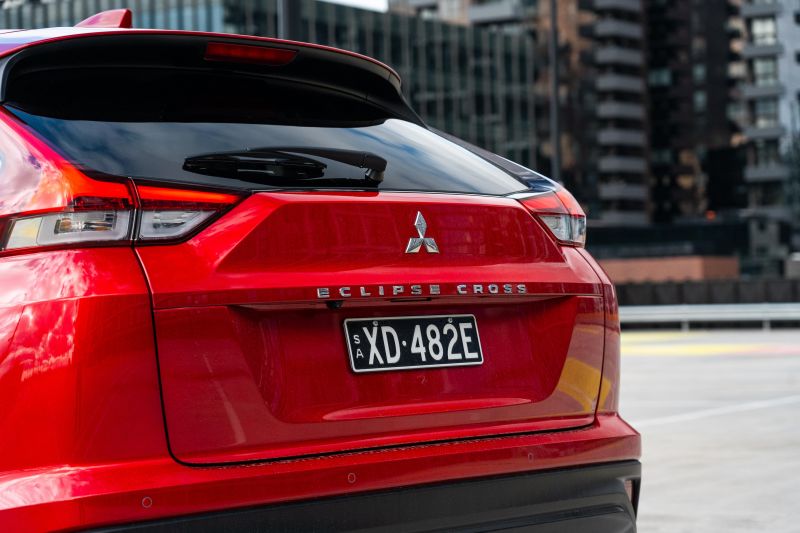The Mitsubishi Eclipse Cross is like Luke Hemsworth – it’s the oft-forgotten third member of a popular family.
Where the shiny new Outlander and aging but popular ASX catch the limelight, the Eclipse Cross quietly hums away in the background. It still sells relatively well, but just not to the same degree.
That’s not to say it’s because it’s a poor relation. If anything it’s a much improved version of the decade-old ASX, though perhaps design is a factor.
The original Eclipse Cross was quite a polarising thing, and the 2021 facelift that followed cleaned up the rear quite a bit to the point where I’d go as far to say it’s actually not unattractive.
Here on test we have the Mitsubishi Eclipse Cross LS Black Edition, a new dark-themed special model introduced for 2023.
It builds on the standard LS with a black pack-style exterior treatment, and adds in some comfort and convenience features for good measure to help justify its rather nominal $1350 premium.
At just over $35,000, the Eclipse Cross LS Black Edition is sharply priced in an incredibly competitive segment.
With the Chinese brands honing in on the value end of the market, does the Eclipse Cross serve as a compelling alternative from a more established brand?
How much does the Mitsubishi Eclipse Cross LS Black Edition cost?
The Eclipse Cross LS Black Edition lists for $35,490 plus on-road costs, $1350 dearer than the one-up-from-base LS.
Drive-away, you’re looking at just under $40,000 according to the company’s website, which is still a few thousand more than even the most expensive petrol-powered GWM Haval Jolion or MG ZST.
But, the Eclipse Cross is on the larger side of the segment, packs a turbocharged engine, and is covered by Mitsubishi’s 10-year warranty – on the condition you service within the dealer network for that period.
It’s also pretty well-aligned with other low- to mid-spec versions of Japanese and European rivals within the small SUV class, as well as low-end grades of some mid-sized alternatives.
The Mazda CX-5 G20 Maxx ($36,110) is not even $1000 more, and the Eclipse Cross on test is also more expensive than the top-spec Mitsubishi ASX Exceed ($34,740).
Mitsubishi Eclipse Cross pricing:
- Mitsubishi Eclipse Cross ES: $31,490
- Mitsubishi Eclipse Cross LS: $34,240
- Mitsubishi Eclipse Cross LS Black Edition: $35,490
- Mitsubishi Eclipse Cross Aspire: $36,490
- Mitsubishi Eclipse Cross LS AWD: $36,740
- Mitsubishi Eclipse Cross Exceed: $40,490
- Mitsubishi Eclipse Cross Exceed AWD: $42,990
Prices exclude on-road costs
What is the Mitsubishi Eclipse Cross LS Black Edition like on the inside?
Not much has changed inside the cabin since the Eclipse Cross launched, and it’s one of the key drawbacks of the package.
The overall design and quality is fine, but the dated displays and switchgear definitely make the Eclipse Cross feel a generation or two behind the latest Outlander.
A tablet-style 8.0-inch touchscreen juts out of the dashboard and isn’t as neatly integrated as other designs, running a very basic interface that offers wired Apple CarPlay and Android Auto, as well as DAB+ radio.
If you want satellite navigation, you need to step up to the flagship Exceed, which seems a little stingy on Mitsubishi’s part. A six-speaker audio system is standard on LS grades and above, and it does the job fine.
There’s also a pair of USB-A ports, as well as AM/FM radio and Bluetooth phone and audio streaming. Many rivals are offering standard navigation and wireless smartphone mirroring these days, so there’s a way to go still.
-
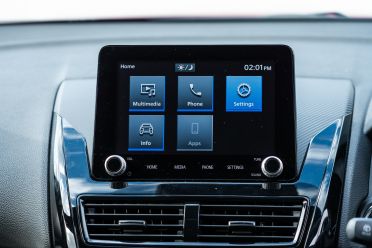
Eclipse Cross 8.0in display -
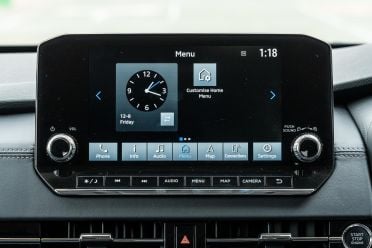
Outlander 9.0in display
Perhaps more frustrating is that for similar money you can get an entry-level Outlander with an improved system sourced from the Renault-Nissan-Mitsubishi Alliance, shared with other models such as the new Nissan Qashqai and X-Trail.
Even the analogue dials – while clean and classic in design – betray the Eclipse Cross’s age, though nothing is perhaps as big an indicator as the fact this car continues to do without a digital speedometer readout.
Only in models with a head-up display (the flagship Exceed) can you get an Eclipse Cross with a digital speed readout. With Australia’s strictly policed limits, it seems like a major oversight when just about every other OEM offers this in 2023.
There’s still some strong points that the Mitsubishi has to offer.
Up front in the LS Black Edition, you pick up micro-suede and leatherette-trimmed seats over the ES and LS, with heated front seats and an electrically-adjustable driver’s seat also thrown in.
While the driver’s pew isn’t the last word in bolstering or support, it’s comfortable enough and the powered adjustment makes for more precise movement – though it only goes four ways. The driving position is quite high giving you a commanding view of the road ahead.
The heated seat functions have HI and LO settings, and have the sort of old light switch-style buttons that again are a bit of a throwback. Single-zone automatic climate control is a plus, as are the physical controls for it. It’s very easy to set and forget, as well as make adjustments or activate air recirculation on the fly.
Storage isn’t much of a strong point though. The small slot ahead of the shifter can barely fit a larger smartphone and the door bins are fairly small, meaning the main stowage is under the front-centre armrest which again isn’t the largest in class.
Practicality gets better in the second row, however.
The Eclipse Cross’s sizing means it offers above average passenger accommodation in the rear, with more than enough space for larger adults to sit behind larger adults.
Head, knee and toe room are all good for the class, aided by that tall roofline. Large rear windows make outward visibility good for the segment too, and there’s minimal intrusion from the driveline tunnel.
One omission is the lack of rear air vents, though second-row passengers are treated to bottle holders in the doors, a fold-down centre armrest with cupholders, and map pockets behind the seats. There are, however, two USB-A charge ports in the rear.
Mitsubishi quotes cargo volume of 405 litres with the rear seats in place, expanding to 1149L with them folded. That’s on the higher side for the segment, though not class-leading.
There’s a space-saver spare wheel under the boot floor.
What’s under the bonnet?
Power in all Eclipse Cross petrol models comes from a 1.5-litre turbocharged four-cylinder petrol engine.
Outputs are rated at 110kW (5500rpm) and 250Nm (2000-3500rpm), while the engine is paired as standard to a continuously variable transmission (CVT). Front-wheel drive is standard, with LS and Exceed grades also available with optional AWD.
You can also have the Eclipse Cross as a Plug-in Hybrid EV, which teams a 2.4-litre naturally-aspirated petrol engine with two electric motors and a 13.8kWh lithium-ion battery pack – good for 55 kilometres of EV driving range.
Mitsubishi claims the Eclipse Cross 2WD will use 7.3 litres per 100km on the combined cycle. The 63-litre fuel tank can take 91 RON regular unleaded. CO2 emissions, meanwhile, are quoted at 165g/km for 2WD models.
How does the Mitsubishi Eclipse Cross LS Black Edition drive?
The drive experience for the Eclipse Cross is pretty consistent – all the petrols feel about the same as each other, as do the Plug-in Hybrid EV versions.
-
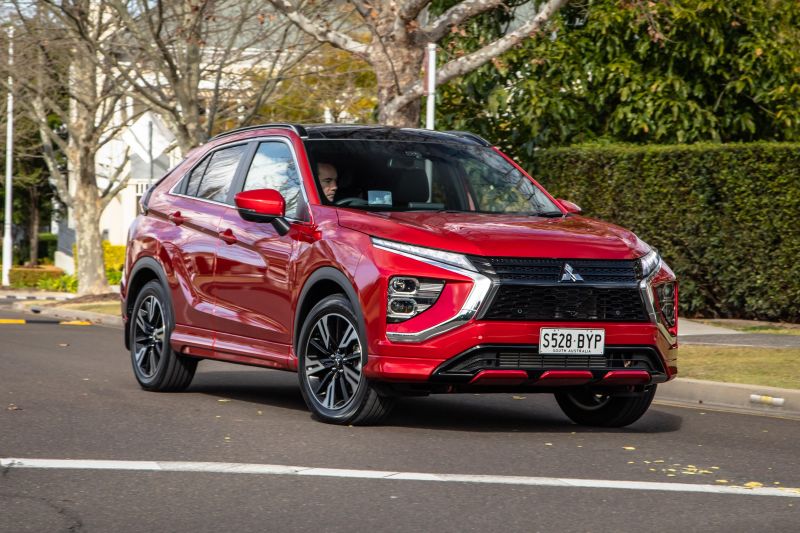
Eclipse Cross Exceed shown
Inoffensive is probably the best way to describe it, given it’s a no-frills crossover to drive and generally goes about its business quite competently.
The CVT does a good job at keeping the turbocharged petrol engine on the boil, but won’t flare revs and be droney unless you really sink your boot – which really, you shouldn’t be doing often in this thing.
Drive in a measured manner, and the Eclipse Cross is pretty refined. Acceleration is generally smooth and the turbo torque helps it get along with decent pace, and there’s not a whole lot of noise from the outside world.
With that said, there was the odd occasion where accelerating at around 60 per cent throttle brought out an elastic pulley-like feeling, where it felt like the car was unable to match the output to input.
It rides fine, but won’t be giving something like a Mazda CX-30 or Kia Seltos sleepless nights. It feels softly sprung but the big wheels can jar over sharper hits.
It’s a similar story for the handling, with the softer tuning and taller proportions making for a top-heavy feel in corners, with the light steering making it easy to pilot in town but it’s not the last word in feedback or feel.
Like I said earlier, this car is fine for everyday stuff and isn’t our pick if you want something more engaging or dynamic to drive.
At a cruise the Eclipse Cross is impressively settled, with the revs dropping thanks to the CVT, and the big-car feel at speed. As noted earlier it’s well insulated from road and wind noise, which is not always the norm at this end of the market.
The Eclipse Cross is a little light on for driver assistance tech in this specification, lacking some of the more sophisticated functions that are becoming prevalent in the segment.
Blind-spot monitoring, rear cross-traffic alert and lane departure warning bolster the base model’s autonomous emergency braking (AEB) from the LS grade and up, but even then there’s limited functionality compared to the semi-autonomous systems available from other brands.
There’s no lane keep assist here, rather just an audible warning; and adaptive cruise control is exclusive to the top-end Exceed.
What do you get?
Eclipse Cross ES highlights:
- 16-inch alloy wheels
- LED daytime running lights
- Black fabric upholstery
- Climate control air-conditioning
- 8.0-inch touchscreen infotainment system
- Wired Apple CarPlay, Android Auto
- 4-speaker sound system
- Tilt, telescopic steering column adjustment
Eclipse Cross LS adds:
- 18-inch alloy wheels
- Automatic headlights
- Automatic high-beam
- LED fog lights
- Rain-sensing wipers
- Privacy glass
- Power-folding exterior mirrors
- Electric park brake with auto hold
- 6-speaker sound system
- Leather-wrapped steering wheel
- Blind-spot monitoring
- Electrochromatic rear-view mirror
- Lane departure warning
- Rear cross-traffic alert
- Rear USB-A and USB-C outlets
Eclipse Cross LS Black Edition adds:
- Black 18-inch alloy wheels
- Gloss black mirrors, skid plates
- Mi-suede, synthetic leather upholstery
- Perforated leather steering wheel, grey stitching
- Black headliner, pillar trims
- 4-way power driver’s seat
- Heated front seats
- PVC leather door cards
- Grey stitching details
- Silver interior garnishes
- Instrument panel
- Centre console sides
- Door grips
Is the Mitsubishi Eclipse Cross LS Black Edition safe?
The Eclipse Cross range – including PHEV – wears a five-star ANCAP safety rating based on 2017 Euro NCAP tests.
It received 97 per cent for adult occupant protection, 78 per cent for child occupant protection, 80 per cent for pedestrian protection, and 58 per cent for safety assist.
Standard safety features include:
- 7 airbags
- AEB incl. Pedestrian detection
- Reversing camera
- Rear parking sensors
Eclipse Cross LS adds:
- Auto high-beam
- Blind-spot monitoring
- Lane Change Assist
- Lane departure warning
- Rear cross-traffic alert
Eclipse Cross Aspire adds:
- Adaptive cruise control incl. stop function
- Surround-view cameras
Eclipse Cross Exceed adds:
- Ultrasonic misacceleration Mitigation System
How much does the Mitsubishi Eclipse Cross LS Black Edition cost to run?
Mitsubishi covers its line-up with a standard five-year, 100,000km warranty. Service within the brand’s national dealer network, however, and you up that to 10 years or 200,000 kilometres – whichever comes first.
Scheduled maintenance is required every 12 months or 15,000 kilometres, with capped-price servicing available for up to 10 years.
Mitsubishi Eclipse Cross service pricing:
| 1st | 2nd | 3rd | 4th | 5th | 6th | 7th | 8th | 9th | 10th |
|---|---|---|---|---|---|---|---|---|---|
| $299 | $399 | $399 | $399 | $399 | $699 | $499 | $499 | $499 | $699 |
That’s a total of $4740 over 10 years, up $950 on the 2022 Eclipse Cross.
As for real-world fuel consumption, I saw an indicated average of 7.4L per 100km following a week of mixed driving, which included peak-hour commuting and a decent ratio of freeway driving.
Considering the Eclipse Cross lacks idle stop/start for urban duties, that’s not a bad result at all.
CarExpert’s Take on the Mitsubishi Eclipse Cross LS Black Edition
The Eclipse Cross is pretty competent against most metrics, though it doesn’t really shine in any area.
If anything the ingredients are all there, but the execution is a little behind the front runners. Its dated interior is a real kicker, as is the lack of LED headlights and more sophisticated assistance technologies lower down in the range.
The inoffensive on-road manners and above-average cabin practicality are notable highlights though, as is the well-insulated cabin and planted feeling at higher speeds.
In the face of increasing competition from the Chinese brands, the Eclipse Cross’s star is fading as newer, more value-packed rivals hit the market.
Further, even the entry-level Outlander ES ($36,240) offers way more bang for buck with more space, more desirable features and more power from a larger 2.5-litre petrol engine. It’s also much newer inside and out.
The LS 2WD is probably the pick of the range, and while the Aspire 2WD fills the missing spec boxes the $5000 extra over this LS Black Edition feels a little steep when $40,000 can buy you a lot of metal from various other brands.
Click the images for the full gallery
MORE: Everything Mitsubishi Eclipse Cross

